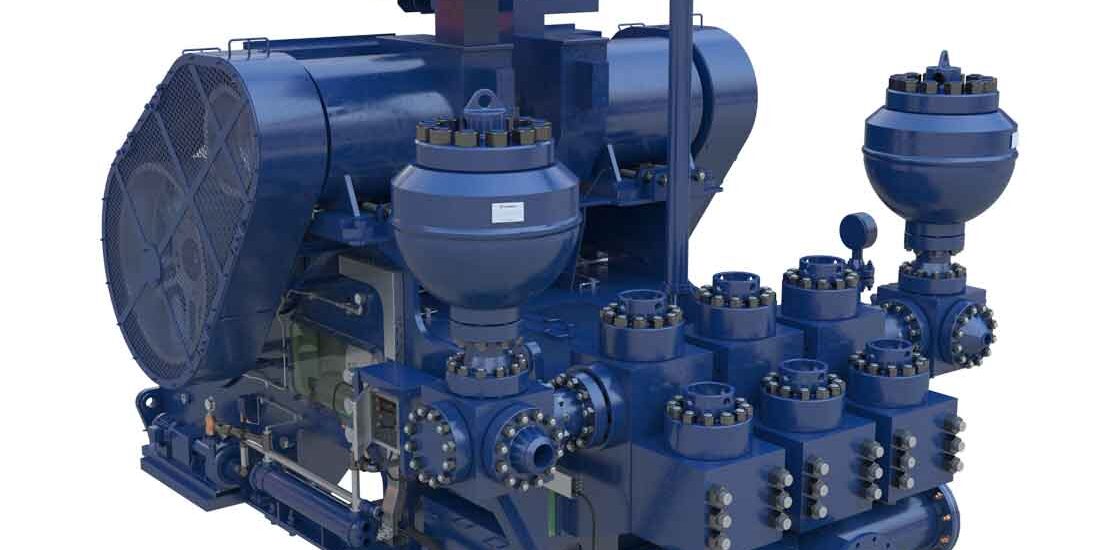The hydraulic output of a drill mud pump is directly proportional to the amount of fluid it is designed to transport. This is especially true when drilling a total depth or surface hole. The hydraulic output should be high enough to convey the anticipated weight of fluid in the planned well profile. The pump should also have functional stroke counters to measure displacement. Additionally, it should be fitted with an emergency high-pressure kill pump and tested to the maximum working pressure.
One of the most common problems encountered by drillers is poor-quality bentonite. It is estimated that 70 percent of all field mistakes are related to poor quality mud. Other common problems include general maintenance and poor performance. Listed below are some common causes of poor pump performance. Read on to discover how to keep your drill mud pump in top condition. These are the most important considerations when choosing a drill mud pump.
Pump stroke counters are standard equipment on mud pumps. These gauge the rate at which the pump is operating and keep track of its cumulative number of strokes. Counting strokes is crucial for monitoring the performance of the pump and controlling the well’s integrity. A well that is unstable may lead to an accident or drilling rig repair. If the pump is not working properly, you could find yourself in a sticky situation and in danger of overheating and jamming the drill head.
Different pumps are designed for different operating conditions. Some pumps have one piston, while others have two. These pumps pump fluid at a lower pressure than vapor pressure, which can cause damaging cavitation. Another option is to use a charge pump or booster pump. The discharge line of a mud pump is often connected to a booster or charge pump. Shop custom molded cables now from Contact Instruments. When the pump is not running, you can still use a charge pump connected to the suction line.
The Drill Mud Pump is a portable tool that facilitates the transfer of drilling fluid through a high-pressure manifold. This fluid serves a variety of functions including lubricating the drilling tools, cleaning the well, and balancing the pressure in the stratum. A drill mud pump is designed to meet the requirements of API Spec 7K. The pump’s cylinder is easy to replace and the suction valve is easily dismantled for maintenance.
The drill mud pump is an important piece of oil well drilling equipment. The mud pump circulates drilling fluid under high pressure, up to seven or eight thousand psi or 52,000 kPa. There are two basic types of drilling mud pumps: single-acting and double-acting. You can also get mud pump for sale. The difference between the two types is the time it takes for the suction and drainage to complete in one cycle. When a pump is used, it is important to know which type it is before buying one.
The Hex Pump is one of the most powerful mud pumps on the market today. Developed by Schlumberger, this mud pump delivers one thousand thirty-four gallons of drilling fluids per minute. As the most powerful mud pump on the market, it is also one of the most expensive. The Lerma Hex Pump delivers more drilling fluids per minute than any other available on the market today. It is also rated for extreme pressure and high flow.
A mud pump has many components. Fluid end parts consist of a fluid cylinder, discharge manifold, pulsation damper, and liners. Power end parts include the crosshead and extension rod. Shop custom instrument cables now. A mud pump’s maintenance schedule should be based on the frequency of use, the amount of work required, and the cost of production. While mud pump maintenance is usually the responsibility of the drill operator, the mud engineer is usually onsite at large pipeline operations. During routine inspections, the HDD operator should ensure all parts are replaced regularly.
Drilling with fluid has been around for centuries. The term “drilling mud” was first coined when a herd of cattle was driven through a muddy field near Spindletop and the mud was used to lubricate the drill bit and string. Since then, fluids have come a long way. Offshore mud pumps are continually taxed to meet the needs of operators who are drilling in the most challenging environments.
There are a few things you can do to make your mud pump work better. Make sure the impellers are not too far apart to cause excessive vibration and noise. Incorrect clearance of the impeller can damage overcurrent components. Adjust the clearance with the help of screws on the rear bearing body. The suction stroke of a submerged mud pump is usually determined when clean water is delivered. This capacity should be adjusted according to the amount of mud you are pumping.









